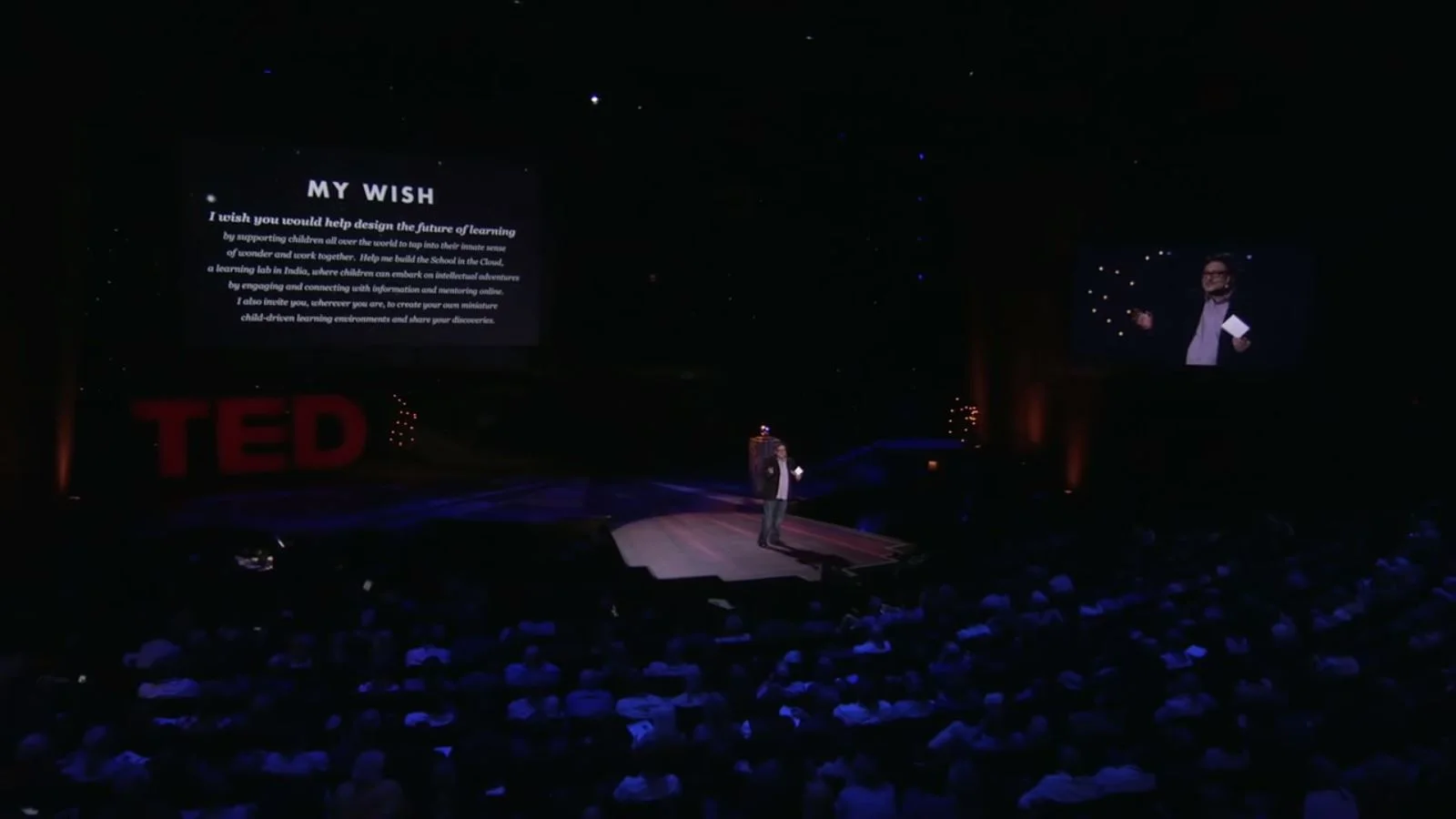Sugata Mitra at TED
Research completed by Dr. Sugata Mitra over the last 16 years has changed the way we view the role of computers in education, considerably shaping the direction of Educational Technology. As an inventor with a Ph.D. in Physics, Dr. Mitra developed a number of inventions and patents in cognitive sciences and educational technology throughout the 1980’s and 1990’s.
In 1999, Dr. Mitra began carrying out a number of experiments where he left children without any computer experience, alone with computers without any instructions. In the process, Dr. Mitra stumbled across the extraordinary ability of children to teach themselves to use technology in order to educate themselves on the computer's content. Dr. Mitra argues that this occurs as a result of children forming order out of chaos in order to self-direct their own learning and thus named these Self-Organising Learning Environments (SOLEs). His research provided compelling evidence that children will be able to teach themselves to develop literacy skills when left alone with a computer. He won the first TED prize for his work in 2013.
This student centred learning approach encourages children to follow their curiosity while empowering students and developing their self-management skills. Since teachers play a role as facilitators or are not used at all, Dr. Mitra has described SOLE’s as minimally invasive education.
In order to incorporate SOLE into a classroom, the idea was developed into an educational approach that involves a small group of children who find information by exploring the Internet as a group. In a number of empirical experiments, Dr. Mitra has demonstrated that children are able to learn almost anything by themselves when they are in a small community of learners, and when they have access to a huge amount of information, as is possible with the Internet. This was demonstrated when children in rural India taught themselves English in order to learn the information about DNA replication on a computer.
How are SOLEs More Relevant Today Than Traditional Western Schooling?
In today’s rapidly advancing and dynamic technological landscape, the most successful workers will be creative, able to work well with others when problem-solving, and be able to adapt to any changes in the workplace. SOLE allows students to work collaboratively and creatively on digital devices in order to solve problems. This technology also inspires students to ask ‘big’ questions, while empowering them to find the answer (and more questions). Considering the majority of human knowledge is accessible on the Internet, it is more important these days that students are able and willing to ask and pursue answers to big questions, as opposed to memorising facts. Interestingly, Dr. Mitra has also called for Internet access to be allowed in examinations, to reflect real-world scenarios.
One of the most important findings of Mitra’s research was that the students who spoke no English were able to teach themselves English, so they could use search engines to find information. The students even improved their English pronunciation on their own, after being part of a SOLE.
When involved in a SOLE, students are free to move around and share information between groups, allowing all students to collaborate with all other students during the exercise. This gives students a chance to experience negotiating with and learning about others from a different culture or background, as the groups formed tend to be heterogeneous in relation to culture and gender.
Outcomes and Implications
When children between the ages of 8-12 are able to access information to educate themselves, they are developing independent thinking skills as well as the ability to research and problem solve independently. When using a SOLE, students feel more empowered as they are encouraged to take ownership of their learning. By learning in a small-group when interacting face-to-face with other students, all students have increased opportunity to practice and develop better social skills, while being constantly exposed to other people’s perspectives. When it is affordable, having a learning facilitator help to move student discussion forward and invite further curiosity, helps to further improve learning outcomes.
Dr. Mitra’s research has demonstrated the potential for children in developing countries to spontaneously teach themselves accessible information. Considering the insurmountable cost of providing all children in the world with a teacher, the use of SOLEs opens new options for cost- effective education to be provided for the world’s poorest. If every child had access to a cheap tablet with open-source educational applications and solar power, we can drastically minimize poverty and inequality through education.
Building a GPS for learning
Learn more about how his work influenced our “Google maps” for learning:



